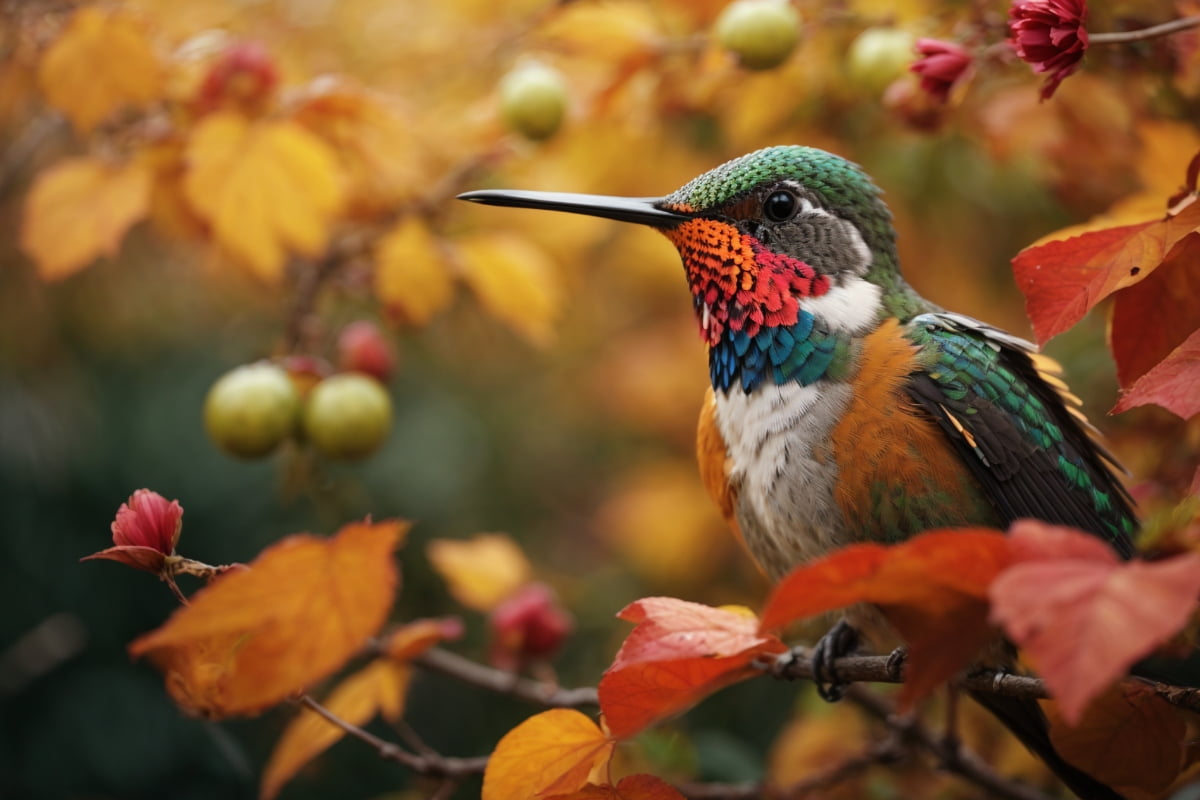Despite hummingbirds’ fragile appearances, these stunning birds undertake one of nature’s most incredible migratory journeys each year. But when exactly do these little birds leave the state of Pennsylvania? And what drives their departure?
Hummingbirds Yearly Migration From Pennsylvania:
Hummingbirds typically begin their migration south from Pennsylvania in late September to early October. However, breeding males might start their journey as early as August.
As the weather cools and food sources diminish, these birds head towards warmer climates, primarily in Central America, to find abundant food and optimal breeding conditions.
In this blog post, we will explore more the world of hummingbirds, their migratory patterns, and the specific cues that signal their departure from Pennsylvania. By understanding their behaviour, we can better appreciate and support these amazing birds.
Key Takeaways
- Seasonal Departure: Hummingbirds leave Pennsylvania as the seasons change, marking a significant event in the state’s natural calendar. Their departure starts in August, late September to early October.
- Resilience and Precision: These tiny birds showcase remarkable resilience, travelling vast distances with incredible accuracy during their migration.
- Emotional Connection: The migration of hummingbirds evokes feelings of wonder and sadness among Pennsylvania’s residents, highlighting our deep bond with nature.
- Human Reflection: Observing the hummingbirds’ journey prompts introspection about our own life journeys and the motivations behind our personal migrations.
Related post to read about Best Hummingbird Feeders
The Great Migration: Why Do They Leave?
- Survival Instincts: The basic instinct to survive is the heart of their migration. As Pennsylvania’s temperatures drop, the availability of food sources, primarily nectar, diminishes. Migrating allows hummingbirds to find warmer climates with abundant food.
- Reproductive Needs: Migration also plays a crucial role in their breeding cycle. They can find optimal conditions for nesting and raising their young by moving to specific regions.

Pennsylvania’s Hummingbird Calendar: Key Departure Dates
- Early Departures: Breeding males, being territorial, often leave first. In Pennsylvania, they may start their journey as early as August.
- Peak Migration: The majority of hummingbirds begin their migration in late September or early October. This is when you’ll notice a significant decrease in their numbers around feeders and gardens.
- Stragglers: Some young birds or late breeders might linger a bit longer, but by the end of October, most have embarked on their journey south.
The Journey South: Where Do They Go?
Hummingbirds don’t just randomly head south. Their destinations are often specific wintering grounds in Central America. Some species, like the Ruby-throated Hummingbird, might travel as far as Panama, covering thousands of miles.
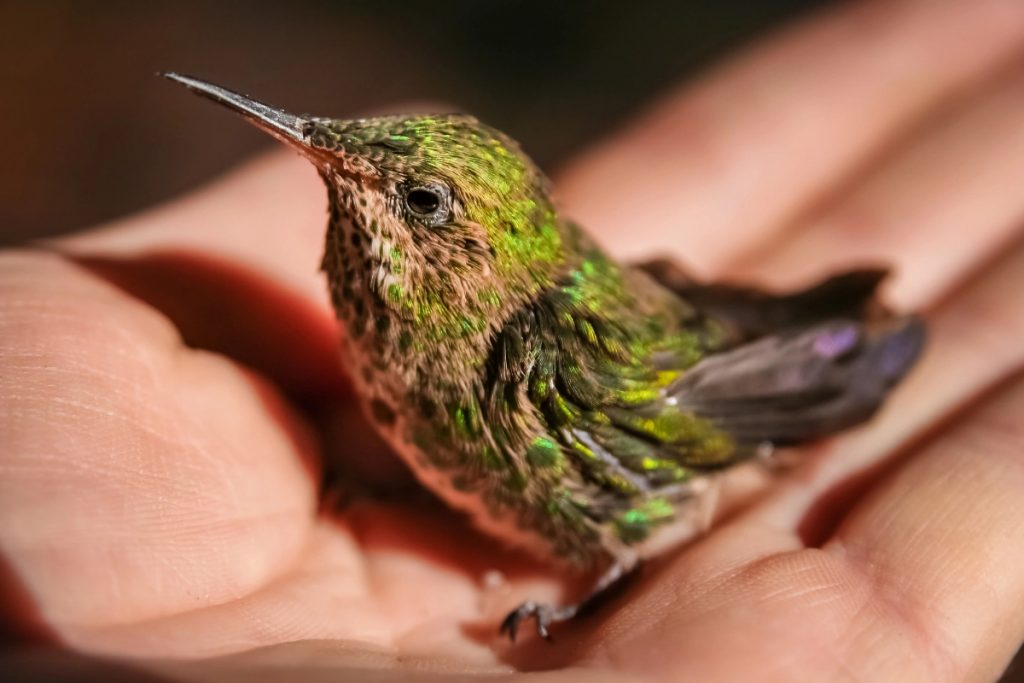
Supporting Hummingbird Journey: How You Can Help
As they prepare for their demanding migratory journey, there are several ways we can assist them, ensuring they have the best chance of reaching their destination safely.
Maintain Feeders:
- Consistent Supply: Even as the season changes, it’s essential to keep your feeders full. As flowers begin to wane, feeders become a critical source of nutrition for these tiny travellers.
- Cleanliness: Regularly cleaning your feeders prevents the growth of mould and bacteria, which can be harmful to hummingbird birds.
- Right Mixture: When preparing sugar water for feeders, use a ratio of 1 part sugar to 4 parts water. Avoid using honey or artificial sweeteners, as they can be harmful.
Provide Water:
- Shallow Sources: Hummingbirds prefer shallow water sources. A shallow dish or a bird bath with a gentle slope is ideal. This allows them to wade in without the risk of submersion.
- Clean Water: Ensure the water is fresh and clean. Change it regularly to prevent the growth of algae and mosquitoes.
- Bathing Spots: While they primarily use water for drinking, hummingbirds also enjoy bathing to clean their feathers. Adding a few rocks or pebbles to the water source can give them a perfect perch for this activity.
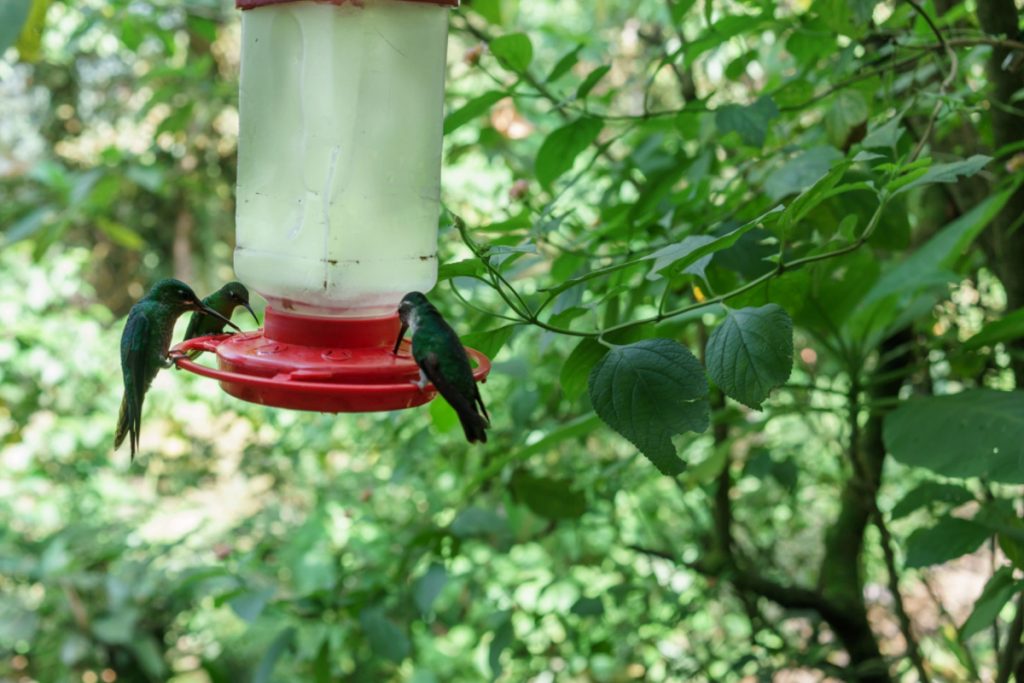
Signs of the Impending Journey: Hummingbird Behaviour Before Migration
Before embarking on their long journey, hummingbirds exhibit certain behaviours that signal their impending departure. They often become more territorial around feeders, consuming large amounts of nectar to build up fat reserves.
This hectic feeding helps them store energy for the long flight ahead. You might also notice them checking out the same spots repeatedly, a behaviour known as “zoning”, which helps them memorise locations for their return.
The Duration of the Flight: How Long is Their Journey?
The length of the hummingbird’s migration journey varies depending on the species and the specific route they take. For many, the journey from Pennsylvania to Central America can span anywhere from a week to several weeks.
Factors affecting the duration include weather conditions, availability of food sources along the route, and the bird’s overall health and stamina.
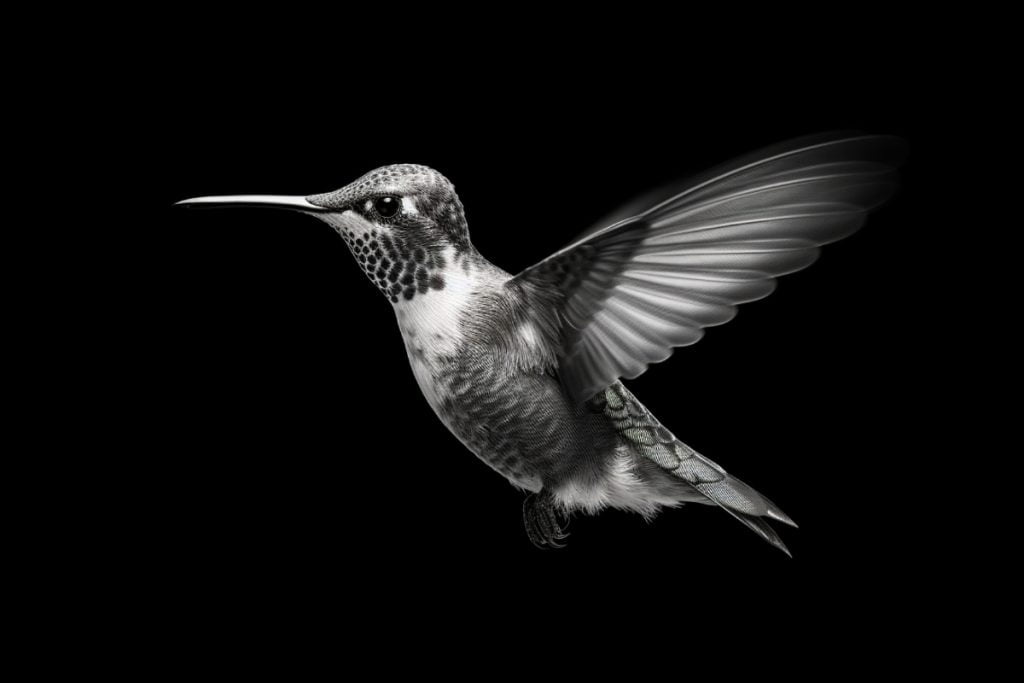
What Do Hummingbirds Face During Migration?
Migration is no small feat for these tiny birds. Along their journey, hummingbirds face numerous challenges:
- Predation: Birds of prey, like hawks, are a constant threat.
- Weather: Sudden storms or strong winds can be difficult.
- Exhaustion: The non-stop flight, especially over the Gulf of Mexico for some, demands immense energy.
- Food Scarcity: Finding enough nectar sources along the way is crucial for survival.
Do Any Hummingbirds Stay Behind?
While the majority of hummingbirds migrate south for the winter, there are occasional reports of individuals overwintering in Pennsylvania. These instances are rare and often involve species not typically found in the state, like the Rufous Hummingbird.
It’s crucial for residents who spot hummingbirds during the colder months to provide food and shelter, as natural nectar sources are scarce.
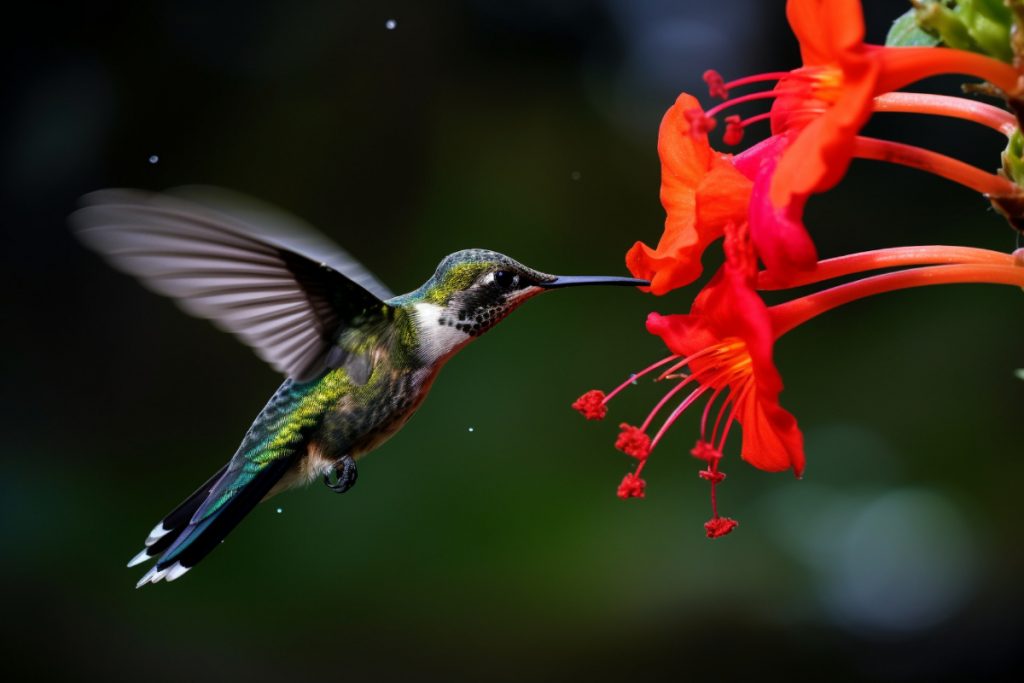
The Return: When Do Hummingbirds Return to Pennsylvania?
Hummingbirds typically return to Pennsylvania in spring, around April. Their migration north is motivated by breeding requirements and the availability of food.
Following their migration pattern, the Ruby-throated Hummingbird is often the first species to make its appearance in Pennsylvania during the spring. This Hummingbird species is primarily driven back by the attraction of breeding opportunities and the blossoming of early nectar-rich flowers in the region.
Final Thoughts
As the seasons change and the colourful Pennsylvania landscape transforms, the departure of our beloved hummingbirds marks a touching moment in the natural calendar.
These tiny birds exhibit remarkable resilience, travelling great distances with precision and determination.
Their migration inspires amazement and may even evoke feelings of sadness as we watch these stunning birds depart.
So, as you gaze into the skies, watching the last of these beautiful birds heading south, one of the greatest gifts you can offer is to prepare for their return.
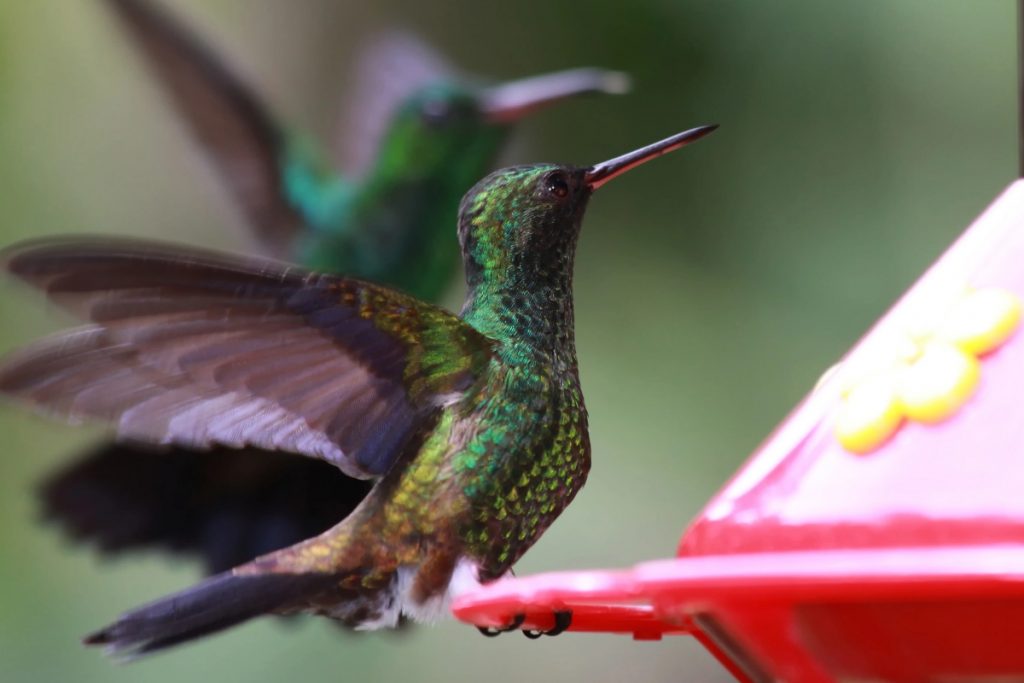
Frequently Asked Questions (FAQs)
Q: What are some common species of hummingbirds found in the United States?
A: Common species include the Ruby-throated Hummingbirds, Rufous Hummingbirds, Black-chinned Hummingbirds, Broad-tailed Hummingbirds, and Calliope Hummingbirds.
Q: When do Ruby-throated Hummingbirds typically migrate?
A: Ruby-throated Hummingbirds begin their spring migration from Central America to North America around late March to early April, returning south in late summer to early autumn.
Q: Are there any specific hummingbird species native to North Carolina and South Carolina?
A: Yes, the Ruby-throated Hummingbird (Archilochus colubris) is the primary species found in both North Carolina and South Carolina.
Q: How do hummingbirds sustain their energy during migration?
A: Hummingbirds consume nectar from flowers and sugar water from hummingbird feeders, which provides them with the necessary energy for their journey. They can consume up to half their body weight in sugar daily.
Q: What are some flowers that hummingbirds are particularly attracted to?
A: Hummingbirds are drawn to tubular flowers like the trumpet creeper, cardinal flower, and other native plants that produce nectar.
Q: Are there any hummingbird species that are commonly seen in South Dakota?
A: South Dakota primarily sees the Ruby-throated and Rufous Hummingbirds, with occasional sightings of Calliope Hummingbirds.
Q: When does the breeding season for hummingbirds typically begin?
A: The breeding season for hummingbirds usually starts in late spring, soon after their spring migration.
Q: Are there hummingbirds in British Columbia?
A: Yes, British Columbia is home to several species, including Rufous Hummingbirds and Calliope Hummingbirds, during the warmer months.
Q: How do cold snaps affect hummingbirds?
A: Cold snaps can be challenging for hummingbirds, especially during migration. They rely on nectar from flowers, and a cold snap can delay the blooming of these vital food sources.
Q: What is the significance of Hummingbird Central?
A: Hummingbird Central is a resource that provides information on hummingbird sightings, migration patterns, and general knowledge about different species.
Q: How can I attract more hummingbirds to my garden?
A: Planting native plants, especially tubular flowers like the trumpet creeper and cardinal flower, and setting up nectar feeders can attract hummingbirds. Ensure the sugar water in feeders is fresh and clean.
Q: Are there hummingbirds in Southern California?
A: Yes, Southern California hosts several species, including Anna’s Hummingbirds, Black-chinned Hummingbirds, and occasional vagrant hummingbirds from other regions.
Q: How do Broad-billed Hummingbirds differ from other common hummingbird species?
A: Broad-billed Hummingbirds have a distinctive bright red bill and are primarily found in the southwestern United States and Mexico.
Q: What do Female Ruby-throated Hummingbirds look like?
A: Female Ruby-throated Hummingbirds have a green back and crown with a white throat and belly. They lack the bright ruby throat that males possess.
Q: How do Hummingbird banders contribute to our understanding of these birds?
A: Hummingbird banders capture, tag, and release hummingbirds to study their migration patterns, lifespan, and habits, providing valuable data on hummingbird populations.
Q: What challenges do larger hummingbirds face compared to regular hummingbirds?
A: Larger hummingbirds may require more energy (food) to sustain their activities and might be more visible to predators. However, their size might also give them advantages in territorial disputes.
Q: Are there any hummingbirds that arrive particularly late during the migration season?
A: Late hummingbird arrivals can include vagrant hummingbirds or young birds. Rufous Hummingbirds, for instance, can sometimes be late migrants.
Q: How many types of hummingbird species exist?
A: There are over 300 types of hummingbird species worldwide, with the majority found in Central and South America.
Q: What should the ratio of sugar to water be when making food for hummingbirds?
A: A common ratio is 1 part sugar to 4 parts water. Boil the mixture to dissolve the sugar and let it cool before filling the feeders.
Q: How do cold weather conditions affect hummingbirds during their breeding ranges?
A: Cold weather can delay the availability of food sources like nectar from flowers, which can impact the breeding success and survival of hummingbirds.
Related Posts to Read: Hummingbirds Migrations
Related Posts to Read: Hummingbirds Availability by Locations.
- Are there Hummingbirds in Albuquerque?
- Are There Hummingbirds in Arizona?
- Are there Hummingbirds in Alberta?
- Are There Hummingbirds In Alabama?
- Are There Hummingbirds In Mexico?
- Are There Hummingbirds In The Caribbean?
- Are There Hummingbirds In Canada?
- Are There Hummingbirds In Jamaica?
- Are There Hummingbirds In Florida?
- Are There Hummingbirds In Massachusetts?
- Are There Hummingbirds In Michigan?
- Are There Hummingbirds In Texas?
- Are There Hummingbirds In New Jersey?
- Are There Hummingbirds In New York?
References:
- About Hummingbird (Wikipedia).
- About Pennsylvania (Link)
- Greenewalt, C. H. (1960). Hummingbirds. New York: Doubleday. Google Scholar.
